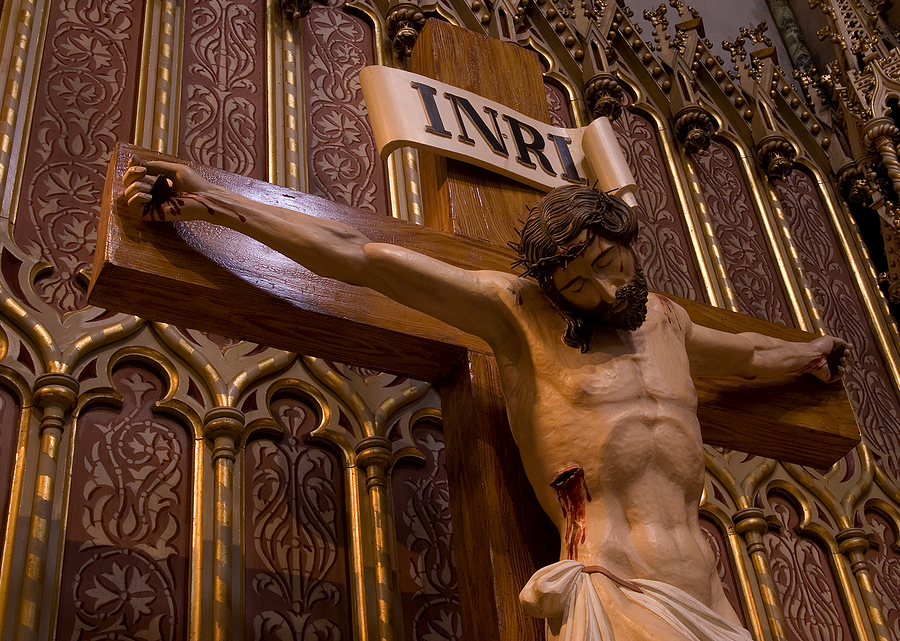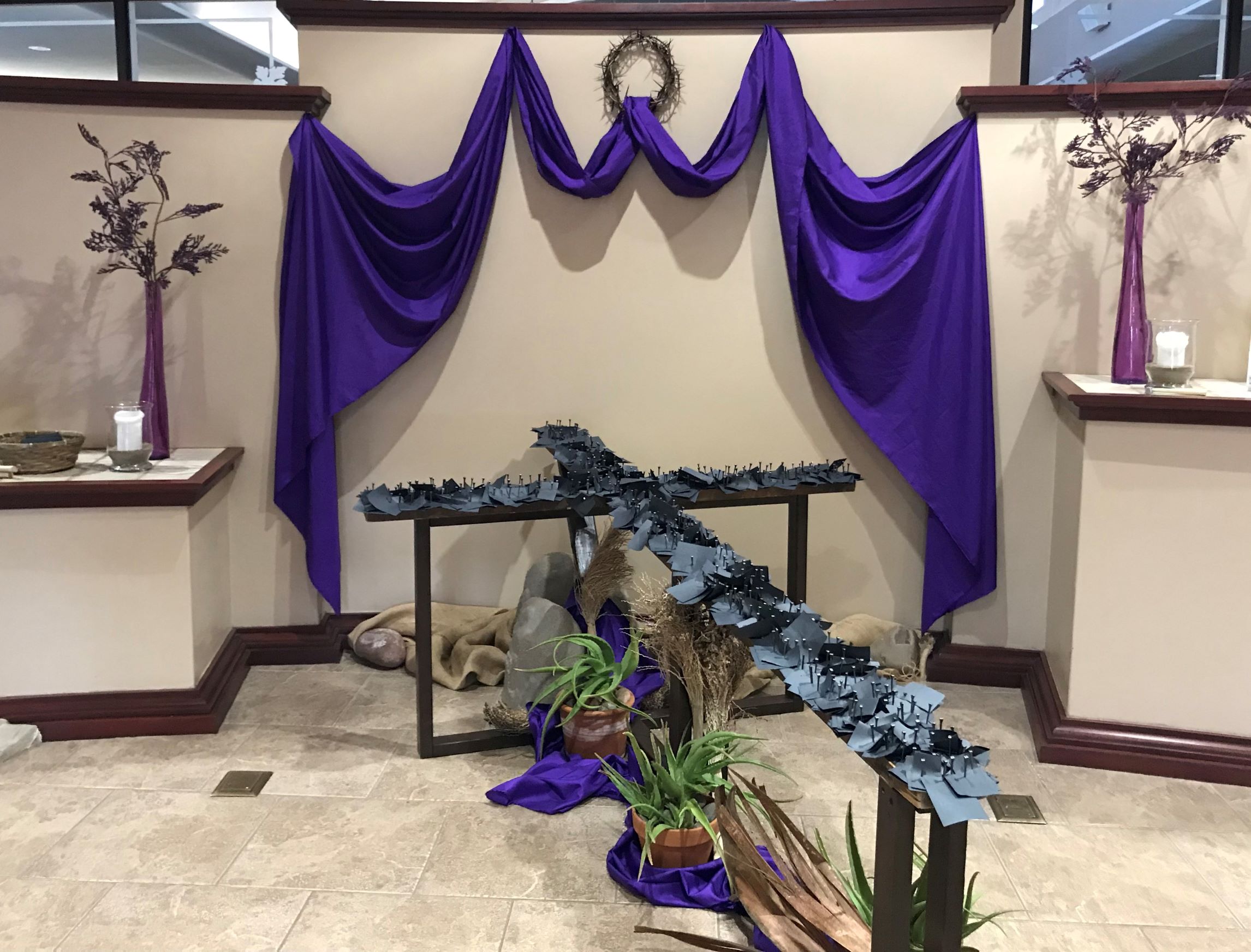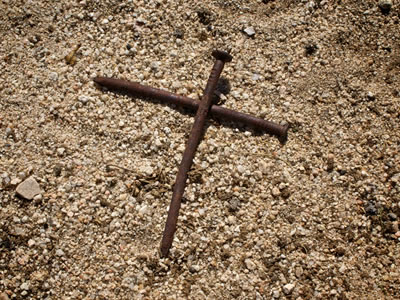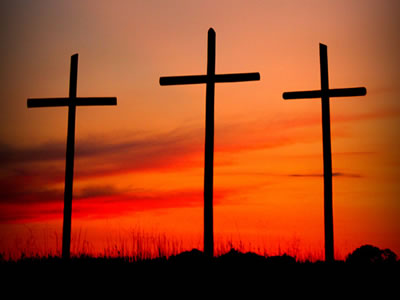Corpus Christi Blog

The Vertical and Horizontal Beams
03-28-2020Weekly ReflectionJen Arnold, M.A. in Theology and CatecheticsThere is no doubt that the cross is the most recognized symbol of Christianity. It symbolizes what our Lord endured for us, what we carry, and our hope for salvation. There is so much meaning wrapped up in this one symbol of our faith. Today, we will take a closer look at one specific aspect of the symbolism of the cross as it relates to our life and our faith.
Not by coincidence, the cross is made up of two beams of wood – one vertical and one horizontal. The vertical beam symbolizes your relationship with God while the horizontal beam represents your relationship with others. You need both to form a cross. You need both to be Christian.
READ MORE
The Cross: How Our Sins Crucify Christ
03-22-2020Weekly ReflectionJen Arnold, M.A. in Theology and CatecheticsLast week we covered how when we go to the foot of the cross, we are present at the actual sacrifice Jesus made for us. Another way we are present and participating is by crucifying Him ourselves through our acts of sin. This is a tough one to swallow, but the cross is actually where we personally continue to participate in the crucifixion of Jesus every single day.
Paragraph #598 of the Catechism of the Catholic Church has a rather dense explanation of this truth, which I will attempt to unpack here. First, the Catechism says that this teaching is supported by our Tradition which has been handed down by all the Christians who have come before us. The very first Christians recognized that “sinners were the authors and the ministers of all the sufferings that the divine Redeemer endured” and that it was not merely an act of the Jews who were condemning him or the Roman soldiers who were carrying it out. In other words, this is not an invented form of “Catholic guilt,” but an understanding of the reality of what the crucifixion actually meant, from the earliest followers of Christ. That understanding was then passed down through the generations to us in the Church.
READ MORE
The Cross: Standing at the Foot of It
03-15-2020Weekly ReflectionJen Arnold, M.A. in Theology and CatecheticsThis week we will reflect on what took place at the foot of the cross and how we participate in it still today.
The gospel of John tells us who was at the foot of the cross when Jesus was crucified: “Standing by the cross of Jesus were his mother and his mother’s sister, Mary the wife of Clopas, and Mary Magdala.” (Jn 19:25). Of course, John was also present as this was when he was entrusted with Jesus’ mother, Mary (Jn 19:27). As you can see, there were not very many people there. Jesus had many friends and followers who followed him around in crowds numbering in the thousands, forcing him to perform miracles just to feed them. He had 12 dedicated Apostles as his closest friends, yet only one remained at the foot of the cross. Here Jesus was, at the apex of his suffering out of love for us, and he was abandoned by all but a few people. This fact is not unlike what is going on today around us. Many Christians today claim to love Jesus, but how far are they really willing to go for Him? To be standing at the foot of a cross where a man is suffering and dying is not a comfortable place to be and many are not willing to be that uncomfortable.
The second thing that is important to notice in the scene at the foot of the cross is that Mary, His mother, is standing. She is not sittng or flailing about, she is standing. There is no doubt that Mary’s suffering was second only to Jesus’. Simeon had prophesied to her that a sword would pierce her heart (Lk 2:35) and that moment had finally come. Yet, she handles her suffering with dignity and conviction, standing before her crucified Son. Her strength and perseverance in the midst of such horrendous suffering serves as our example in our own suffering. Of course, in our fallen nature, we so often fall to the ground or flail about under the weight of our suffering, but we should al- ways strive to follow Mary’s suffering. The next time we feel tempted to collapse, we can ask ourselves if our suffering matches the suffering of Jesus or Mary and when we see that it does not, we can ask for her strength and stand strong under the weight of it.
READ MORE
The Cross: The One We Help Others Carry
03-08-2020Weekly ReflectionJen Arnold, M.A. in Theology and Catechetics“As they led him away they took hold of a certain Simon, a Cyrenian, who
was coming in from the country; and after laying the cross on him, they made him carry it behind Jesus.” (Lk 23:26).
This week we will reflect on the cross as that burden which we help others carry. Jesus did not carry His cross alone. He was battered and beaten and the cross was heavy. In His humanity, it simply became too much for Him and it became apparent that He wasn’t going to make it if left to His own strength. A bystander who had nothing to do with the situation, but was strong and healthy, was called in to help. By all accounts, Simon of Cyrene was compelled by the Roman soldiers to carry the cross, but it is hard to imagine that after seeing Jesus suffering so much, he wasn’t moved with pity and compassion.
Last week we discussed how in bearing our own crosses, we cooperate with Jesus in His redemptive work. In a very literal and physical way, Simon assisted Jesus in His redemptive work in the Passion. Jesus was doing the hard work, but Simon helped Him. At the time Simon carried the cross, he had no idea the good that would come about at the end of this terrible event. He could not see the big picture – the eternal picture. Of course, divine providence knew how it would all unfold, and Simon was placed in exactly the right place at the right time. This wasn’t an accident. Everything that happens in Scripture is intentional and has meaning for us. Simon of Cyrene shows us how we are called to help others carry their crosses in the spirit of sincere charity because all of it is redemptive for the Body of Christ.
READ MORE
The Cross: The One We Carry and Will Die Upon
03-02-2020Weekly ReflectionJen Arnold, M.A. in Theology and CatecheticsThis Lent, we will progress through a six-week series of reflections on the cross and its various roles and purposes in our lives. We will begin with a reflection on the cross as something we ourselves carry and ultimately, die upon.
Jesus, the Son of God made man, came into this world in flesh to restore humanity from the damage caused by sin. The humanity of Jesus plays a significant role for our salvation. He became like us, lived like us, and suffered like us, so that we might imitate Him in all things. Through His Passion and crucifixion, we learn much about how to carry our own crosses and die upon them as well.
READ MORE